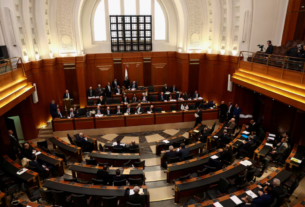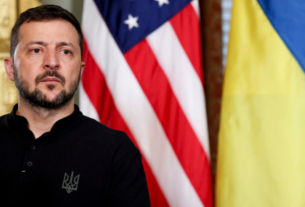The USS Carl Vinson, a U.S. nuclear-powered aircraft carrier, arrived in Busan, South Korea, on Sunday. This deployment is a direct response to North Korea’s recent missile tests and signals Washington’s commitment to its allies.
Rear Admiral Christopher Alexander, commander of Carrier Strike Group Nine, emphasized the importance of the mission. “This deployment enhances our combat readiness and strengthens regional security,” he said.
The USS Carl Vinson is accompanied by two warships, the guided-missile cruiser USS Princeton and the guided-missile destroyer USS Sterett. These ships will conduct joint exercises with the South Korean navy to improve military coordination.
South Korea’s navy described the carrier’s arrival as a demonstration of force. It reassured the public that allied military strength is prepared to counter any threats.
North Korea test-fired strategic cruise missiles just days before the carrier’s arrival. The country claims these weapons enhance its ability to launch a counterattack.
Military experts say Pyongyang views U.S. aircraft carrier deployments as a direct provocation. North Korea has previously responded to similar deployments with missile launches or military exercises.
South Korea and the United States have been expanding their joint drills. These exercises focus on deterring North Korea’s advancing missile and nuclear programs.
Kim Jong Un personally oversaw North Korea’s recent missile launches. The state-run Korean Central News Agency called the tests a response to “increasing hostilities from the United States.”
U.S. and South Korean officials argue that these military exercises are defensive. They insist the goal is to maintain stability in the region, not escalate tensions.
Public sentiment in South Korea has shifted due to rising threats. A recent poll found that 73% of South Koreans now support the country acquiring its own nuclear weapons.
Foreign Minister Cho Tae-yul acknowledged the growing debate over nuclear weapons. “All options remain on the table,” he said, referring to South Korea’s long-term defense strategy.
North Korea’s missile program continues to violate United Nations resolutions. The country faces heavy international sanctions, but enforcement has weakened in recent years.
China and Russia have blocked stronger UN Security Council measures against North Korea. Both nations argue that sanctions alone will not resolve tensions on the Korean Peninsula.
The United States remains committed to South Korea’s defense. Military agreements between the two countries include extended deterrence measures, such as deploying nuclear-capable bombers if needed.
Defense analysts say North Korea will likely continue weapons tests. Pyongyang often launches missiles to coincide with major U.S.-South Korea military exercises.
The international community remains divided on how to handle North Korea. Some advocate for renewed diplomatic talks, while others support increasing military pressure.
South Korea and the United States are scheduled to hold more joint military drills in the coming months. These exercises will test their ability to respond to potential conflicts.
The USS Carl Vinson will remain in South Korea for a limited period. The carrier’s presence serves as a strategic warning to North Korea.
Tensions in the region show no signs of easing. North Korea’s continued missile tests suggest that further military responses from the U.S. and South Korea are likely.
Regional leaders closely monitor the situation. Diplomatic solutions remain uncertain as military strategies take priority.
The Korean Peninsula remains a flashpoint for global security. The decisions made by Washington, Seoul, and Pyongyang in the coming weeks could shape the region’s future.




